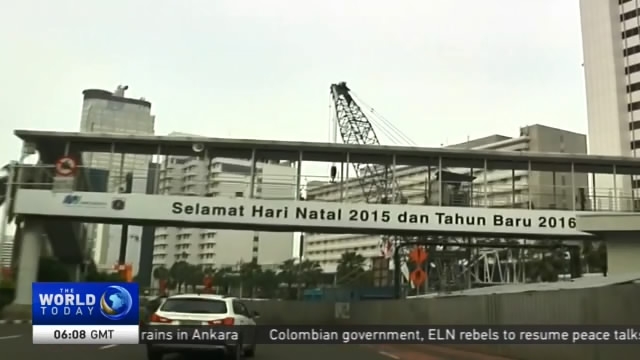
14:27, 06-May-2018
Inside Indonesia: China-built US$5.5 bln high-speed railway benefits locals
02:55

Chinese President Xi Jinping first proposed the 21st Century Maritime Silk Road in 2013 during his visit to Indonesia. The plan is part of the Belt and Road Initiative. And the Jakarta-Bandung high-speed railway is part of the Initiative. CGTN's Liu Yang investigates this rail project being built by China, and the potential benefits for people living in Indonesia.
Indonesia is one of the fastest growing economies in Southeast Asia. One of the biggest recent foreign investments has come from China which is building the country's first high-speed railways. It's a joint project between a consortium of Indonesian state-owned companies and China Railway International. Experts say it could become a financial and operational model for other important infrastructure projects in the region. The Jakarta-Bandung high speed railway should cut travel time between the two cities from three hours to less than 40 minutes.
HE HUAWU, CHIEF ENGINEER CHINA RAILWAY CORP. "This is the first international cooperative project in which China has brought its entire industrial chain model to another country. The complete high-speed railway operation system includes technology, operations, equipment and construction that will be used as a reference for other international projects in the future."
The 150-kilometer high-speed railway between Jakarta and Bandung is expected to create more than 41,000 jobs during its construction. When it is finished it will be able to carry 44,000 passengers a day.
XIE FENG FORMER CHINESE AMBASSADOR TO INDONESIA "Building the high-speed railway in Indonesia is a landmark in the implementation of the One Belt One Road Initiative, it is a major breakthrough in international capacity and equipment cooperation. It also shows that China is implementing a 'periphery policy' with neighboring countries. Through joint discussion and construction, and sharing a new model of mutual benefitial relations, it is clear that we are together in building a community with a common destiny, and common interests."
Experts say the high speed rail will provide a boost to local industries such as power generation and logistics. China has built a number of major bridges and ports, and cooperated on other large-scale infrastructure projects within ASEAN, such as the Suramadu Bridge and the Hydropower Plant in Bandung.
LIU YANG SURABAYA, INDONESIA "This is the Suramadu Bridge. It is one of the most significant cooperative projects between China and Indonesia, a symbol of the two countries' economic and technical cooperation. It is the longest trans-oceanic bridge in Southeast Asia, linking East Java Province and Madura Island in Indonesia. Most important of all, the bridge has been of benefit to people living in Indonesia."
People here say the bridge has changed their living conditions significantly, and they are hoping more infrastructure projects will come to Indonesia soon.
Indonesia is the biggest economy in Southeast Asia. But experts say it missed most of its economic targets in 2015, resulting in its slowest growth since 2009. The Jakarta government is now banking on infrastructure development and foreign investment as part of a renewed push for economic growth. The region hopes to achieve bilateral trade with China worth $500 billion by the end of this year and $1 trillion by 2020.
Experts say high-speed rail will have a strong "multiplier effect" for economic growth in countries throughout Southeast Asia where new infrastructure development is currently in hot demand. As cooperation deepens, more projects will be on the way to benefit local residents.

SITEMAP
Copyright © 2018 CGTN. Beijing ICP prepared NO.16065310-3
Copyright © 2018 CGTN. Beijing ICP prepared NO.16065310-3